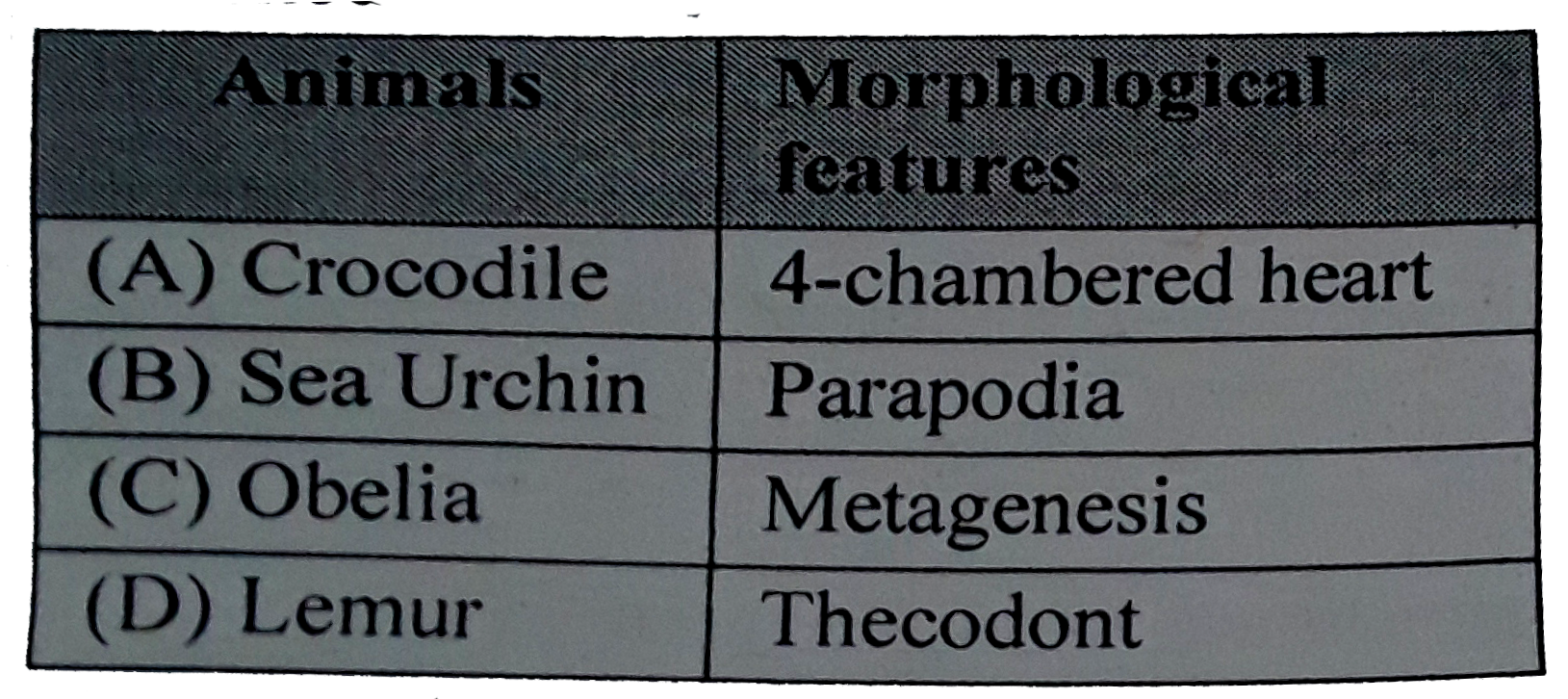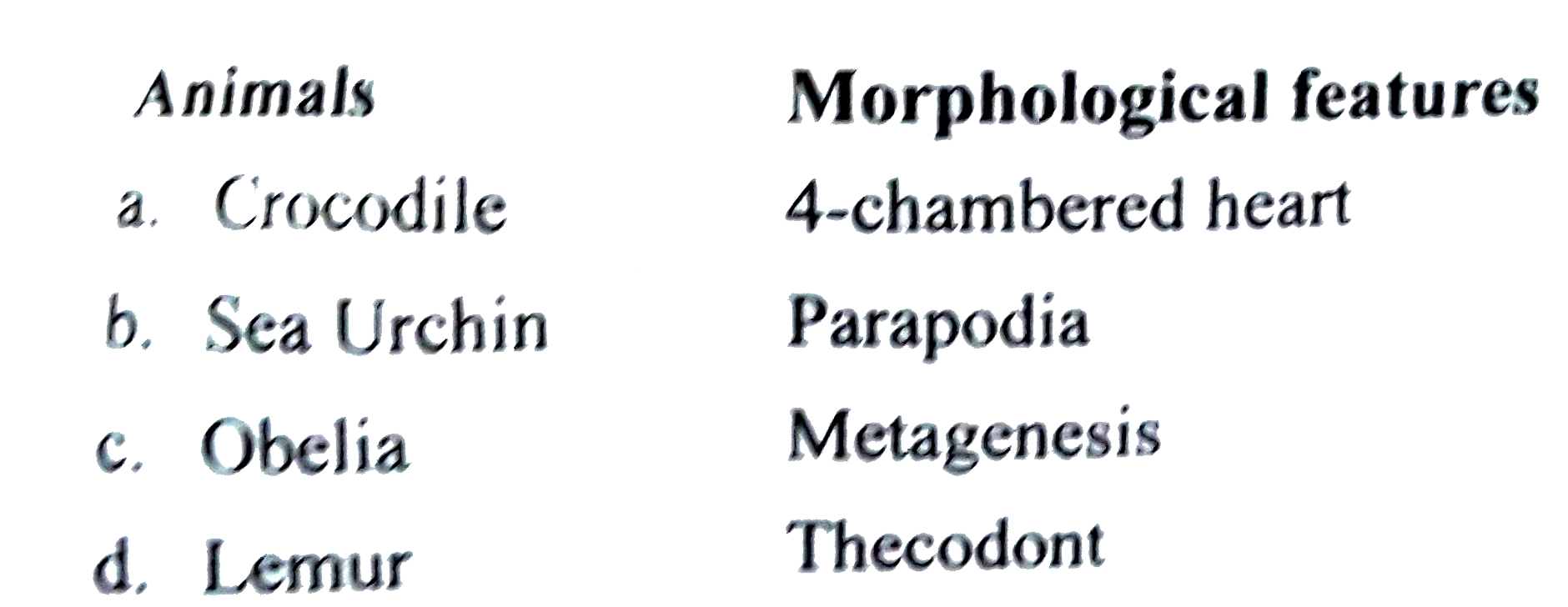Which of the following pairs is correctly matched?
1)Hinge joint - between vertebrae
2)Gliding joint - between zygapophyses of the successive vertebrae
3)Cartilaginous joint - skull bones
4)Fibrous joint - between phalanges
The correct Answer is:B
To determine which pair is correctly matched, let's analyze each option provided in the question step by step.
Step 1: Analyze the First Pair
- Joint Type: Hinge Joint
- Example: Knee Joint
- Movement: Allows movement in one plane only.
Conclusion: The knee joint is indeed a hinge joint, allowing movement in one plane (flexion and extension). However, the option states "in joint with between what he read," which seems unclear. Assuming it refers to the knee joint, this pair is correctly matched.
Step 2: Analyze the Second Pair
- Joint Type: Gliding Joint
- Example: Zygapophyses of Successive Vertebrae
- Movement: Permits sliding movement of two bones over each other.
Conclusion: Gliding joints are correctly described here. They do allow sliding movements, and they are indeed found between the zygapophyses of successive vertebrae. This pair is correctly matched.
Step 3: Analyze the Third Pair
- Joint Type: Cartilaginous Joint
- Example: Skull Bones
- Movement: Slightly movable joint.
Conclusion: Cartilaginous joints are not found between skull bones; they are found between vertebrae and between ribs and sternum. Therefore, this pair is incorrectly matched.
Step 4: Analyze the Fourth Pair
- Joint Type: Fibrous Joint
- Example: Phalanges
- Movement: Immovable joint.
Conclusion: Fibrous joints are indeed immovable, but they are not found between phalanges; they are typically found between the bones of the cranium. Hence, this pair is also incorrectly matched.
Final Conclusion
After analyzing all pairs, the only correctly matched pair is the second one: Gliding Joint with Zygapophyses of Successive Vertebrae.
Answer:
The correctly matched pair is the second one: Gliding Joint with Zygapophyses of Successive Vertebrae.
---
- Joint Type: Hinge Joint
- Example: Knee Joint
- Movement: Allows movement in one plane only.
- Joint Type: Gliding Joint
- Example: Zygapophyses of Successive Vertebrae
- Movement: Permits sliding movement of two bones over each other.
- Joint Type: Cartilaginous Joint
- Example: Skull Bones
- Movement: Slightly movable joint.
- Joint Type: Fibrous Joint
- Example: Phalanges
- Movement: Immovable joint.
After analyzing all pairs, the only correctly matched pair is the second one: Gliding Joint with Zygapophyses of Successive Vertebrae.
The correctly matched pair is the second one: Gliding Joint with Zygapophyses of Successive Vertebrae.
Topper's Solved these Questions
- LOCOMOTION AND MOVEMENTBOOK - AAKASH SERIESCHAPTER - LOCOMOTION AND MOVEMENTEXERCISE - EXERCISE -I(DISORDERS OF MUSCULAR AND SKELETAL SYSTEMS)
4 Videos
- LOCOMOTION AND MOVEMENTBOOK - AAKASH SERIESCHAPTER - LOCOMOTION AND MOVEMENTEXERCISE - EXERCISE -II(MUSCLE)
27 Videos
- LOCOMOTION AND MOVEMENTBOOK - AAKASH SERIESCHAPTER - LOCOMOTION AND MOVEMENTEXERCISE - EXERCISE -I(SKELETAL SYSTEM)
41 Videos
- HUMAN REPRODUCTIONBOOK - AAKASH SERIESCHAPTER - HUMAN REPRODUCTIONEXERCISE - EXERCISE-III
55 Videos
- MINERAL NUTRITIONBOOK - AAKASH SERIESCHAPTER - MINERAL NUTRITIONEXERCISE - Exercise - III
52 Videos
Similar Questions
Knowledge Check
Which of the following pairs are correctly matched ?
AnimalsMorphological features(i)Crocodile−4-chambered heart(ii)Sea urchin−Parapodia(iii)Obelia−Metagenesis(iv)Lemur−ThecodontA(ii),(iii) and (iv)B(i) and (iv)C(i) and (ii)D(i),(iii) and (iv)
Which of the following pairs are correctly matched ?

View SolutionWhich of the following pairs are correctly matched?
View SolutionWhich of the following pairs are correctly matched ?

View SolutionWhich of the following pairs are correctly matched ?
AnimalsMorphological features(i)Crocodile−4-chambered heart(ii)Sea urchin−Parapodia(iii)Obelia−Metagenesis(iv)Lemur−Thecodont
View SolutionWhich one of following pairs is correctly matched?
View SolutionWhich one of the following is correctly matched ?
View SolutionWhich of the following pair is not correctly matched?
View Solution
